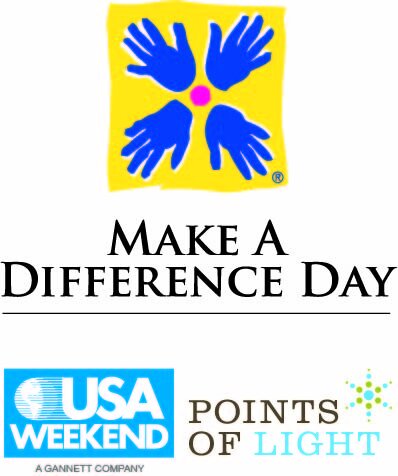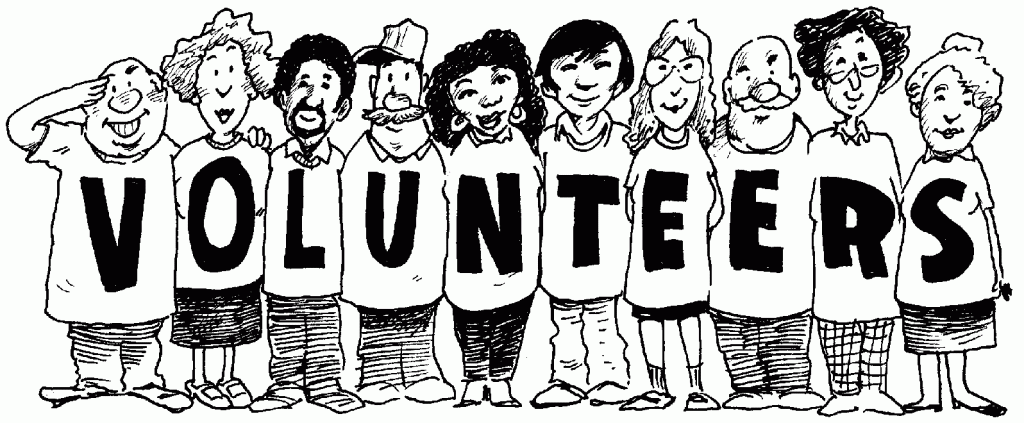 Make A Difference Day is just a few weeks away! If you know how you’re going to make a difference on October 27, awesome!
Make A Difference Day is just a few weeks away! If you know how you’re going to make a difference on October 27, awesome!
You might say “But I’ve never volunteered before? How can I make a difference? I don’t even know where to start”
Today is your lucky day! We have seven tips to help make sure your first volunteer experience is a great one!
Find a cause you care about.
Is there something that you really care about? Does your local school system need a little help? Are there a lot of stray animals in your neighborhood? Do you love the way your library smells and want everyone to be as excited about books as you are?
Once you’ve found something in your community you’d like to make better, then…
Find a project in the DAYta Bank.
Once you’ve decided on a cause you’d like to support, you can find a project near you in the Make A Difference Day DAYta Bank! As long as you’re looking, why not find a few different projects that sound like they could be fun and…
Do a little research.
Spend a bit of time on the websites of the nonprofits that are hosting the projects you’re interested in. Find out how they support the causes you’re interested in and the work they do in your community. If you find a nonprofit you’d like to support you can…
Sign up for a project!
The DAYta Bank makes it easy to sign up for a project! Once you find a project with an organization you like you’ll be taken to the signup page for that project. Sign up and you’ll be all set to volunteer on Make A Difference Day!
Remember it’s OK to ask questions.
It’s alright to ask questions about the project before you show up. Project listings should have a person to contact if you have any questions about what the project is about and how you need to prepare. A lot of questions are answered in the project descriptions, but if your question isn’t it’s alright to get in touch with the event organizer so you’re ready for the day when you show up!
Show up ready to have fun.
You’re volunteering because there’s a cause you care about, right? That doesn’t mean you can’t have a good time! The best way to make sure you’ll have fun at your first volunteer experience is to go in with an open mind. You might be asked to do something different than what you signed up for, or you might be asked to something you don’t know how to do. Keep an open mind and try it out, you might learn a thing or two, or find something you never thought you’d love to do! Volunteering can be serious business, but that doesn’t mean you can’t have fun.
Take time to reflect on your experience.
A lot of volunteer projects have some time set aside at the end of the project to think critically about the work that you just did. Reflecting on how working in a community garden can have an impact on the health of the local watershed or how it can influence kids to eat better is an important part of the volunteer experience. It doesn’t just give you a definite stopping point for a project, but it helps volunteers to better understand how their work has multiple effects in their community.
Keep making a difference!
Did you have a great time volunteering? Awesome! Tell us about it on the or Did you not quite fit with the project or organization? That’s alright! There are a lot more organizations out there that need your help! Try finding another project in the DAYta Bank or with HandsOn Network!
Was your first volunteer experience great? Did you decide to find a different way to volunteer? Let us know in the comments!
SUPER BONUS TIP!
Did you have a great time volunteering? Why not bring a friend along with you next time? Not only will it make sure you know someone at the project, but you’ll be involving your friend in something you care about and making your community better! Plus there’s a great opportunity to take cheesy pictures to share on Facebook!



 As connectors of people and organizations, you may have access to a wide variety of community partners. By leveraging these relationships – on both a formal and informal basis – you can gain support for new initiatives that expand outreached for increased and more effective engagement. Partnerships also allow organizations with limited resources to maximize impact from existing opportunities.
As connectors of people and organizations, you may have access to a wide variety of community partners. By leveraging these relationships – on both a formal and informal basis – you can gain support for new initiatives that expand outreached for increased and more effective engagement. Partnerships also allow organizations with limited resources to maximize impact from existing opportunities.
 Have you ever found yourself saying, “I’ve always wanted to volunteer, but I don’t have the time,” or “I just don’t know where to start”?
Have you ever found yourself saying, “I’ve always wanted to volunteer, but I don’t have the time,” or “I just don’t know where to start”? • Throw a swap party!
• Throw a swap party!




 Neighbors help neighbors.
Neighbors help neighbors. Neighboring is a place-based way of volunteering that builds on the talents and resources of local residents to strengthen families and elevate struggling communities into flourishing, vibrant places to live. It is about the connections among residents that support positive individual and community behavior based on mutual respect, responsibility, and ownership.
Neighboring is a place-based way of volunteering that builds on the talents and resources of local residents to strengthen families and elevate struggling communities into flourishing, vibrant places to live. It is about the connections among residents that support positive individual and community behavior based on mutual respect, responsibility, and ownership. locally.
locally. 3. Empower communities to help themselves
3. Empower communities to help themselves Neighboring is an asset- and empowerment-based approach that engages underserved and underresourced community members to find innovative, sustainable solutions to address local challenges. Asset-based refers to the acknowledgment that all members of a community can offer something to improve the community: talents, skills, knowledge, or resources. The resident-led approach primarily focuses on a specific geographic area (i.e., ZIP code, neighborhood, or street) in which the majority of the volunteers, activities, and organization come from within a community.
Neighboring is an asset- and empowerment-based approach that engages underserved and underresourced community members to find innovative, sustainable solutions to address local challenges. Asset-based refers to the acknowledgment that all members of a community can offer something to improve the community: talents, skills, knowledge, or resources. The resident-led approach primarily focuses on a specific geographic area (i.e., ZIP code, neighborhood, or street) in which the majority of the volunteers, activities, and organization come from within a community.

